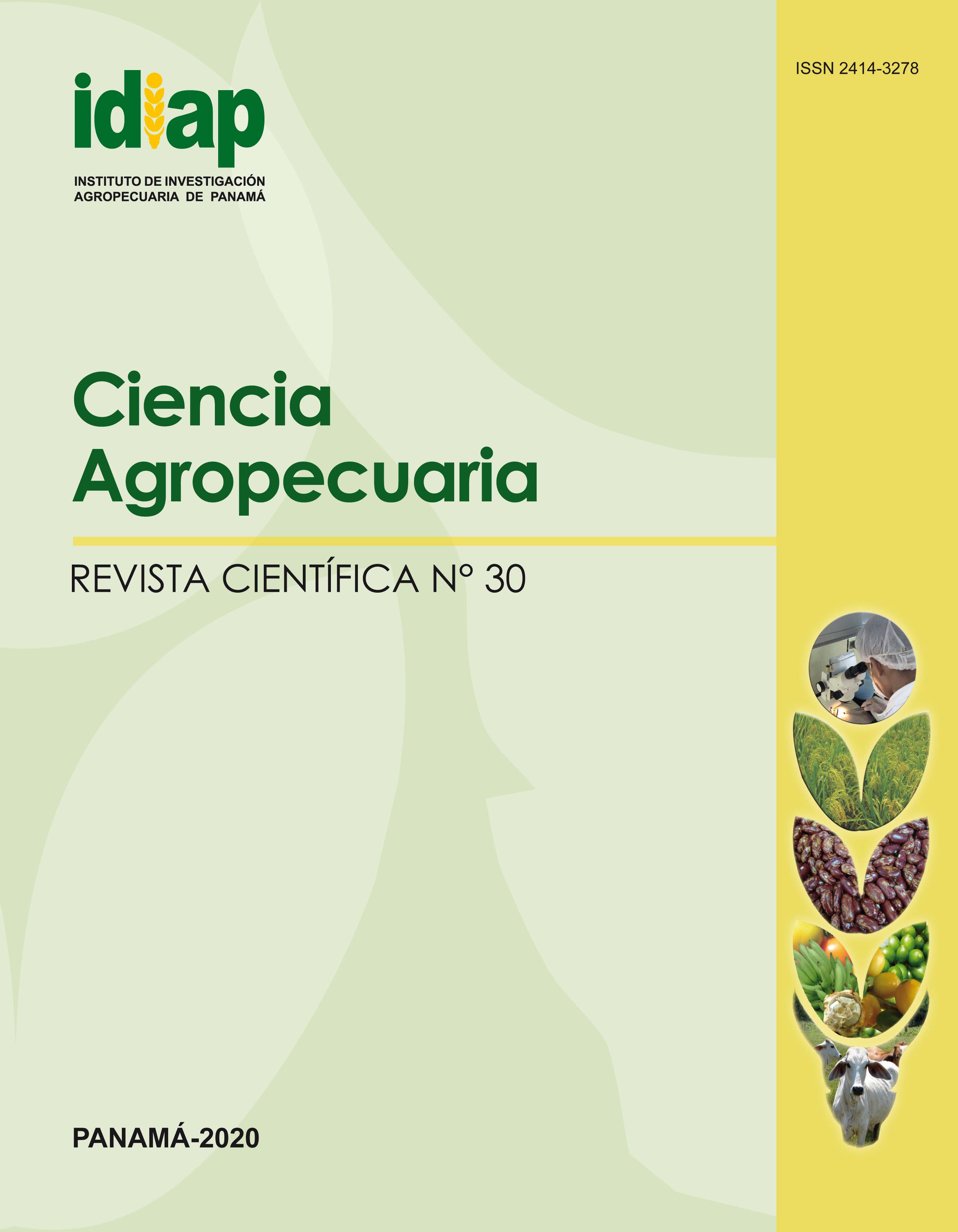ANTICUERPOS DE YEMA DE HUEVO Y NÚCLEO PROTEICO EN LA ALIMENTACIÓN DE LECHONES
Resumen
Cuarenta y ocho lechones de cruza Duroc, Landrace, Yorkshire, Hampshirede 35 d y 6,34 ±0,200 kg. Se alimentaron por 36 d, para evaluar cuatro tratamientos: T1 (control), sin anticuerpos de yema de huevo/sin Nupro®, (SY/SN); T2, con anticuerpos de yema de huevo/sin Nupro (CY/SN); T3, sin anticuerpos de yema de huevo/con Nupro (SY/CN) y T4, con anticuerpos de yema de huevo (CY)/con Nupro (CY/CN). Las dietas isoproteicas (21,0%) e isoenergéticas (3,4 Mcal EM/kg). Al finalizar se tomaron medidas zoométricas: altura a la cruz; longitud de tuberosidades, circunferencia torácica y espesor de grasa dorsal. Posteriormente, tres lechones por tratamiento fueron sacrificados humanitariamente para evaluar la canal. Se tomó peso de; sangre, pulmones, corazón, bazo, hígado y riñones, órganos abdominales, estómago y tracto gastrointestinal. Se utilizó el diseño completamente al azar con arreglo factorial 2 x 2. La adición de anticuerpos de yema de huevo (IgY), Nupro y ambos a las dietas no afectaron (P≥0,05) el peso al sacrificio, ni peso y rendimiento de la canal caliente y fría. Se observó menor (P≤0,05) altura a la cruz (cm) en los animales que recibían ambos aditivos con respecto al tratamiento control; encontrando los siguientes valores (cm): 36,11; 34,29; 33,11 y 34,88 para SY/SN, CY/SN, SY/CN y CY/CN, respectivamente. En longitud de tuberosidades (cm) se observó diferencia significativa (P≤0,01) para los niveles IgY, Nupro y ambos. Se obtuvo la mejor combinación (SY/SN) 45,03 cm. La adición de IgY, Nupro y ambos disminuyeron la longitud de tuberosidades hasta 15,5% con respecto al grupo control.
Descargas
Citas
Balseca, O. S. B. 2009. Utilización de NuPro® (Nucleótidos, proteínas e inositol) en dietas de gallinas Lohman Brown desde el pico de producción hasta las 45 semanas de edad. Tesis de Grado. Escuela Superior Politécnica de Chimborazo. Riobamba, Ecuador. p.12-48.
Castillo, D. 2010. Nupro. Consultagro, Alltech, Venezuela. http://www.consultagro.com.ve/art3.php (Consultado 15 Nov. 2012).
Cera, K.R., D.C. Mahan, R.F. Cross, G.A. Reinhart, and R.E. Whitmoyer. 1988. Effect of age, weaning and postweaning diet on small intestinal growth and jejuna morphology in young swine. J. Anim. Sci. 66:574-584.
Chae, H.S., N.K. Singh, C.N. Ahn, Y.M. Yoo, S.G. Jeong, J.S. Ham, and D.W. Kim. 2006. Effects of egg yolk antibodies produced in response to different antigenic fractions of E. coli O157:H7 on E. coli suppression Asian-Aust. J. Anim. Sci. 19(11):1665-1670.
Chernysheva, L.V., R.M. Friendship, C.E. Dewey, y C.L. Gyles. 2004. The effect of dietary chicken egg-yolk antibodies on the clinical response in weaned pigs challenged with a K88+ Escherichia coli isolate. J. Swine Health Prod. 12(3):119-122.
Church, D.C., W.G. Pond, y K.R. Pond. 2010. El cerdo. In: Fundamentos de Nutrición y Alimentación de Animales. Cap. 23. Editorial Limusa S.A. de C.V. México D.F., México. p. 481-513.
Cook. M. 2009. Inflamación del Intestino: Efectos en Producción Animal y Manejo. Datos proporcionados a Aova Technologies por varias compañías independientes.
Danek, P. 2007. IgY Technologies. Research in pig breeding, Research Institute of Animal Production. Uhříněves, workplace Kostelec nad Orlicí, Czech Republic. 1(1):25-27.
Echeverry, Z. J. J., Z. A. Gómez, y S. J. E. Parra. 2008. Efecto de un B-adrenérgico comercial y varios niveles de lisina sobre la ganancia de peso de cerdos en finalización. Revista lasallista de investigación. 5(1):45-50.
Figueroa-Velasco, J.L., M. Cervantes-Ramírez, J.M. Cuca-García, y M. Méndez-López. 2004. Respuesta de cerdos en crecimiento y finalización a dietas con baja proteína y energía. Agrociencia 38:383-394.
García-Castillo, R.F., K. Hernández-Martínez, J.R. Kawas-Garza, J. Salinas-Chavira, A. Vega-Ríos, M.H. Ruiloba-Villarreal, y H. Fimbres-Durazo. 2014. Efecto de nucleótidos y péptidos de Saccharomyces cerevisiae (NUPRO) en la alimentación de cerdos post-destete. Revista Científica, FCV-LUZ / 24(1):29-37.
García-Castillo, R.F., O.E. Malacara-Álvarez, J. Salinas-Chavira, M. Torres-Hernández, J.M. Fuentes-Rodríguez, J.R. Kawas-Garza. 2010. Efecto de la suplementación de lisina sobre la ganancia de peso y características cárnicas y de la canal en cerdos en iniciación. Revista Científica, FCV-LUZ / 20(1):61-66.
García, E. 1987. Modificaciones al sistema de clasificación climatológica de Koppen. 4ta Ed. Instituto de Geografía. UNAM. México. p. 87-88.
Harmon, B. G., M. Latour y S. Norberg. 2002. Sprayed Dried Eggs as a Source of Immune Globulins for SEW Pigs. Department of Animal Sciences. Swine Research Report. Purdue University. p. 31-35.
Hurtado, E., C. González, y H. Vecchionacce. 2006. Morfometría de órganos vitales de cerdos criollos en el estado Apure, Venezuela. Zootecnia Tropical 24(3):205-211.
Marquardt, R. R. 2011. Epidermal growth factor (EGF) and therapeutic antibodies for pig diets: an alternative approach to the use of antibiotics as growth. Revista Computadorizada de Producción Porcina. Cuba. 18(3):177-180.
NRC, 1998. Nutrient Requirement of Swine. National Research Council. 10th. Revised Edition. National Academy Press. Washington. D.C., U.S.A. 189 p.
Quintero-Moreno, A., N. Huerta-Leidenz, N. Parra de Solano, E. Rincón-Urdaneta, J.A. Aranguren-Méndez. 1996. Efecto de probióticos y sexo sobre el crecimiento características de la canal en cerdos. Revista Científica, FCV-LUZ/ 6(1):5-12.
Song, M., T.M. Che, Y. Liu, J.A. Soares, B.G. Harmon, y J.E. Pettigrew. 2012. Effects of dietary spray-dried egg on growth performance and health of weaned pigs. J. Anim. Sci. 90:3080-3087. doi: 10.2527/jas.2011-4305
Steel, R.G.D., y J.H. Torrie. 1980. Principles and procedures of statistics. A biometrics Approach. 2nd Ed. McGRaw-Hill. New York, USA. p. 622.
Terán, M.G., F.L. Sarmiento, C.J.C. Segura, F. Torres-Acosta y R.R.H. Santos. 2004. Comportamiento productivo, características de la canal y peso del tracto gastrointestinal de cerdos alimentados con aceite de palma africana (Elaeis guineensis). Tec. Pecu. Mex. 42:181-192.
Esta obra está bajo una licencia de Creative Commons Reconocimiento-NoComercial-CompartirIgual 4.0 Internacional.






